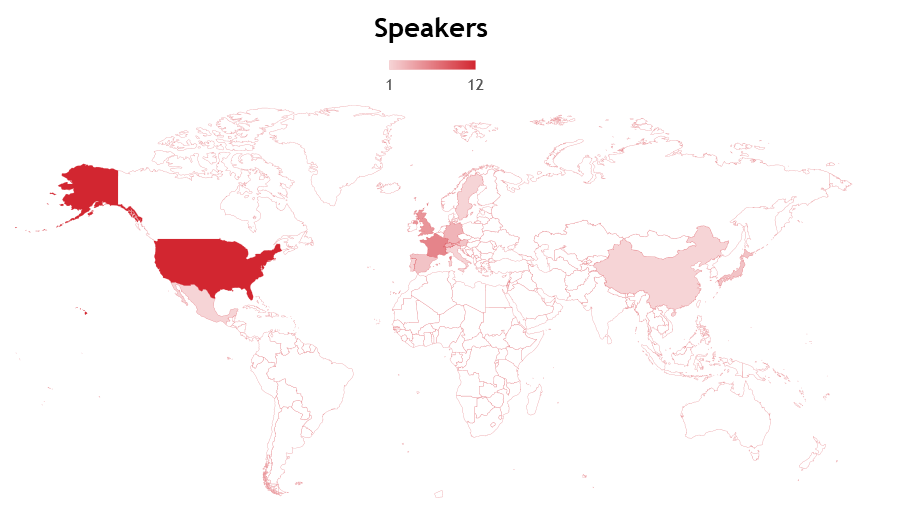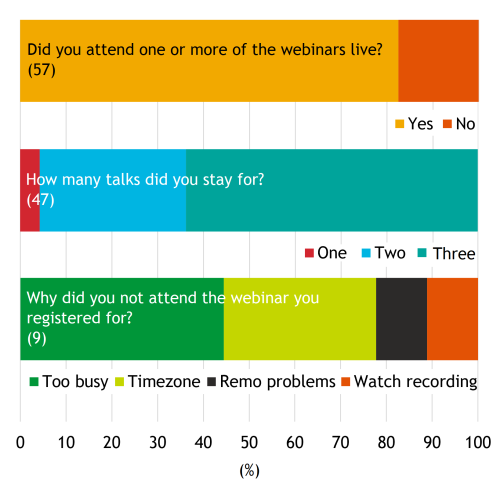A ‘behind the scenes’ look at Development presents…
Posted by Alex Eve, on 16 June 2022
We are currently asking for feedback on our Development presents… webinar series and invite you to complete a short survey using the button below. The survey will close on Wednesday 6 July.
The survey has now closed.
If you’d like to know more about the creation of the webinar series and the progress so far, read on!
Conception
During the pandemic, Development were thinking about ways in which we could support the developmental and stem cell biology communities during this period. What could the journal could offer to substitute the lack of in-person interactions with digital opportunities? We experimented by bringing some virtual elements to the eBSDB/GenSoc 2020 meeting and by the organisation of the Node 10th birthday networking event to bring scientists together in a fun and flexible way. An initial survey of the community determined that the vast majority of respondents (largely based in Europe and the Americas) would be interested in a webinar series featuring developmental biology scientific talks from a mix of early career researchers (ECRs) and principal investigators (PIs) (Fig. 1).

Aims
Highlight recent published or soon-to-be published Development articles and interesting preprints.
We want to promote the authors of great Development papers, as well as to recognise the growing preprint literature and signal our support. We run the webinars monthly with a different Development Editor chairing each month. The webinars are made up of three short (12-15 minute) talks: two of the speakers are selected from Research Articles handled by the chair and the third speaker is chosen from an interesting preprint in the Editor’s field.
Promote ECRs.
Along with various other initiatives in Development, we want to champion ECRs, both by promoting their science and by providing opportunities for career development. We encourage the first authors of the selected papers to present at the webinar, if possible, hoping that reflects greater diversity in career stage than only inviting the corresponding author. We hope that the webinar series provides a forum for ECRs to discuss both of these topics.
Provide a platform for informal discussions and networking in small, flexible groups.
Finally, with the lack of in-person meetings at the time, we wanted to recapitulate some of the ‘chance’ in-person meetings and conversations that occur at seminars and conferences. To achieve this, all participants are invited to join an informal ‘discussion session’. We use the virtual conference platform Remo to host the webinars because, in addition to ‘meeting-wide’ presentations (similar to Zoom), Remo allows dynamic virtual interactions in small groups by allowing participants to quickly move between ‘tables’ (Fig. 2).

To keep the conversation going, we also use a dedicated Twitter hashtag (#DevPres) to allow discussion beyond the webinar platform and we deposit the recorded talks on the Node after the webinar so that people unable to attend the live session do not miss out. We host the talks on our YouTube channel and link these videos to the speakers’ preprint manuscripts on bioRxiv, if desired. Occasionally, we also share some talks on our WeChat channel to reach a wider China-based audience where YouTube can be inaccessible.
Review
Since our first webinar in October 2020, we’ve hosted 42 speakers over 14 individual sessions. Most of the webinars have been chaired by Development’s editors with the occasional ‘special’ webinar hosted by guest chairs, such as those celebrating the anniversary of preLights and Development’s zebrafish issue, as well as Development’s special issues. As we now reflect on future directions for ‘Development presents…’ it’s a good opportunity to look at the stats so far.
Speakers
In terms of speakers, we have had a relatively equal split between men and women and almost three-quarters (74%) of the speakers have been first authors, aligning with our aim to promote ECRs (Fig. 3).

As a UK-based journal, we organise the webinars to begin in the morning (09:00-10:00) or afternoon (i.e. 13:00-19:00) UK time (GMT/BST) so that audiences in Europe-Asia or Europe-Americas, respectively, can attend live. We are also careful to make sure that all the invited speakers (as well as the chair) are in the same or a complementary time zone. The majority (79%) of the webinars have taken place in the afternoon UK time (Europe-America accessible; Fig. 3), which partly reflects the audience from our initial survey (>90% of respondents were in Europe or the Americas; Fig. 1). The majority of speakers have been from Europe-based institutions (this is perhaps unsurprising because European speakers could attend both morning and afternoon sessions). The USA has made up the most number of speakers from a single country (Fig. 4). Moving forward, we could certainly think about how to improve the geographical diversity of our speakers to better reflect the community and our attendees.

Map powered by Bing. © Australian Burea of statistics, GeoNames, Microsoft, Navinfo, OpenStreetMap, Tom Tom, Wikipedia.
Participation
Usually, around 100 people or more (mean 137±50) register for the webinar but this has declined towards the end of 2021. Registration was initially lower for the morning-based webinars, although there hasn’t been much difference between morning vs afternoon registration and attendance in recent months. Overall, almost two-thirds of registrants have signed in to watch the talks live (mean 61%; range 44-98%) and the results from our 2021 survey show that the majority (>60%) of attendees stay to watch all three talks (Fig. 5). Webinar scheduling and timing seemed to be the biggest factor for those that registered but did not attend live (Fig. 5) but the number of people in this category (9) is low. On average, 20% of attendees stay logged on after the talks, presumably to participate in the discussion. While this represents only a relatively small number of people, we hope that those who did stay found the opportunity to talk to the speakers and network more generally to be useful.

Although we do not collect data from registrants, an email address is required to sign up for the webinars via Remo. When a country-level domain is present in the email, we can estimate where some of the ‘Development presents…’ audience is attending from (Fig. 6). Encouragingly, we have a broad representation of registrants from around the globe, which suggests that the webinars are able to reach many countries and audiences.

Map powered by Bing. © Australian Burea of statistics, GeoNames, Microsoft, Navinfo, OpenStreetMap, Tom Tom, Wikipedia.
The future
What is next for ‘Development presents…’? First, we would like to understand the current thoughts and requirements for these types of virtual sessions so we can best adapt as the needs of our audience change. With this in mind, we’d like to invite you to have your say by completing the survey by clicking the link below. It shouldn’t take more than 6 minutes to complete!
The survey has now closed.


 (No Ratings Yet)
(No Ratings Yet)